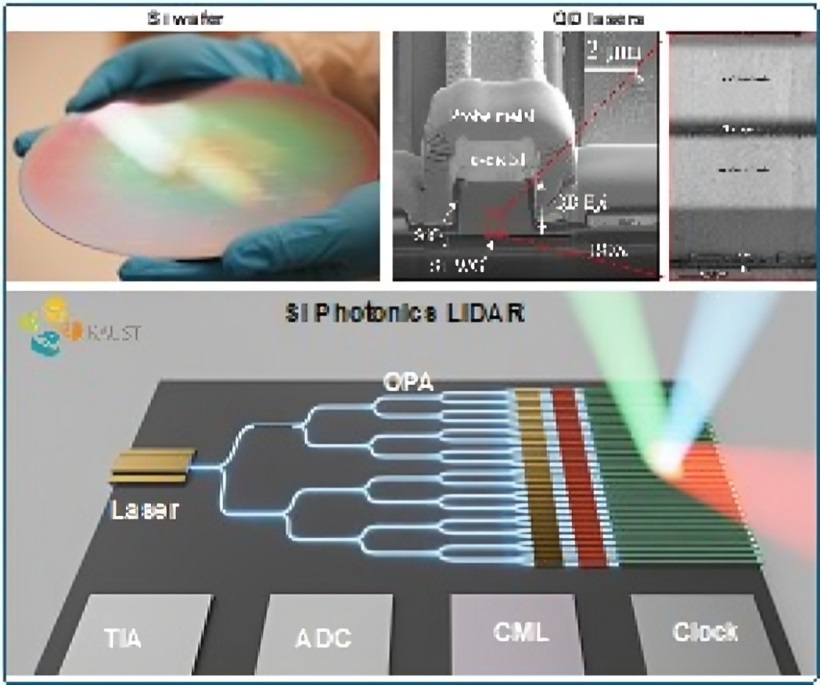Autonomous Mining: Leveraging Silicon Photonics-Integrated LiDAR for Driverless Systems

Project Details
Program
Electrical and Computer Engineering
Field of Study
Photonics, Physics, Semiconductors
Division
Computer, Electrical and Mathematical Sciences and Engineering
Faculty Lab Link
Project Description
This proposal addresses the urgent need for smart construction solutions in the Kingdom of Saudi Arabia (KSA), given the challenging desert terrain and extreme weather conditions. Autonomous haulage trucks, equipped with advanced sensors such as light detection and ranging (LiDAR), present a promising solution for efficient, large-scale material transport in these harsh environments. However, deploying this technology presents challenges, primarily because current LiDAR systems are not tailored for desert environments. Market-available LiDAR products, generally designed for urban traffic scenarios, fall short of the stringent requirements in autonomous mining applications. Traditional mechanical LiDAR systems are not suited to withstand the harsh temperatures and vibrations encountered in mines, and the presence of dense dust significantly reduces their ability to accurately detect and identify targets. To address these challenges, we will focus on improving the reliability of LiDAR hardware and the functionality of its software. The goal is to develop a solid-state LiDAR prototype that incorporates 3D point cloud processing capabilities, making it suitable for the mining operations in complex desert environments.
Our project focuses on enhancing the solid-state Frequency Modulated Continuous Wave (FMCW) LiDAR systems, particularly on developing FMCW laser sources with narrow linewidths for long-range detection, strong anti-vibration, and high thermal stability. To achieve scalable and compact laser sources, quantum dot (QD) lasers and semiconductor optical amplifiers (SOAs) will be integrated onto silicon photonics via heterogeneous integration. This strategy significantly simplifies the assembly of active components like lasers, amplifiers, and photodetectors onto a heterogeneous III-V/Si platform, thereby reducing both complexity and cost. A detailed model for frequency-modulated light sources will be established, incorporating a closed-loop calibration algorithm and a coordinated control mechanism for an auxiliary on-chip optical path. To boost the environmental adaptability of this LiDAR prototype, perception and prediction algorithms will be embedded. A novel 3D point clouds denoising method will be introduced, utilizing both spatial and temporal properties to address interference from airborne dust in sandy environments. Vision Transformers (ViT) will be utilized for advanced feature extraction, enhancing the system's ability to understand complex 3D environments and interactive objects, thereby ensuring accurate instance segmentation. Given the coexistence of autonomous and manned vehicles in mining environments that creates complex traffic scenarios, a prediction algorithm will be developed based on inverse reinforcement learning, to forecast decisions and trajectories of vehicles identified by LiDAR. Altogether, this comprehensive strategy will enhance navigational safety and operational efficiency of autonomous haul trucks within the challenging desert landscapes of Saudi Arabia.
The FMCW solid-state LiDAR prototype developed in this project will feature advanced hardware capabilities, including Output Average Optical Power ≥ 30 mW, Horizontal Field of View ≥ 120°, Vertical Field of View ≥ 30°, and Angular Resolution≤0.15°. On the software side, it will offer precise target segmentation functionality with overall accuracy≥70%, along with prediction capabilities that ensure Average Displacement Error ≤ 2m and Final Displacement Error ≤5m within the subsequent 8 seconds. The performance of the prototype will be rigorously tested and verified on the KAUST campus. As the project progresses, various technologies developed could be made available for licensing, offering significant commercialization prospects. This research will facilitate the wider implementation of autonomous haulage in smart construction sites across KSA, tackling the unique challenges posed by the desert terrain and extreme weather conditions.
About the Researcher
Yating Wan
Assistant Professor, Electrical and Computer Engineering
Affiliations
Education Profile
- Postdoc fellow, University of California, Santa Barbara, 2017-2022
- Ph.D. Hong Kong University of Science and Technology, 2017
- B.S. Zhejiang University, 2012
Research Interests
Professor Yating Wana€˜s research interests are in Silicon Photonics with special emphasis on integration of on-chip light sources for short-reach communication links. She is also interested in other related applications including biosensors/bioimaging, energy harvesting, machine vision, and quantum information processing.Selected Publications
- Y. Wan, C. Xiang, J. Guo, R. Koscica, MJ Kennedy, J. Selvidge, Z. Zhang, L. Chang, W. Xie, D.Huang, A. C. Gossard, and J. E. Bowers*, a€œHigh speed evanescent quantum-dot lasers on Sia€, Laser & Photonics Reviews 2100057, 2021.
- Y. Wan, J. Norman, Y. Tong, MJ Kennedy, W. He, J. Selvidge, C. Shang, M. Dumont, A. Malik, H. K. Tsang, A. C. Gossard, and J. E. Bowers*, a€œ1.3 Aµm quantum-dot distributed feedback lasers directly grown on (001) Sia€, Laser & Photonics Reviews. 14 (7), 2070042, 2020.
- Y. Wan, C. Shang, J. Huang, Z. Xie, A. Jain, D. Inoue, B. Chen, J. Norman, A. C. Gossard, and J. E. Bowers*, a€œLow-dark current 1.55 I¼m InAs quantum dash waveguide photodiodesa€, ACS nano 14(3), 3519-3527, 2020.
- Y. Wan, S. Zhang, J. Norman, MJ Kennedy, W. He, Y. Tong, C. Shang, J. He, H. K. Tsang, A. C. Gossard, and J. E. Bowers*, a€œDirectly modulated single-mode tunable quantum dot lasers at 1.3 Aµma€, Laser & Photonics Reviews. 14(3), 1900348, 2020
- Y. Wan, S. Zhang, J. Norman, MJ Kennedy, W. He, S. Liu, C. Xiang, C. Shang, J. He, A. C. Gossard, and J. E. Bowers*, a€œTunable quantum dot lasers directly grown on Sia€, Optica, 6(11), 1394-1400 (2019).
Desired Project Deliverables
The students are expected to acquire the basic knowledge of the design of the integrated silicon photonics chips, proficient skills of device designs using simulation tools, hand-on experimental experiences of optoelectronic device characterizations, and conference/journal publications.
Recommended Student Background
Semiconductor physics
Integrated photonics
Semiconductor lasers
We are shaping the
World of Research
Be part of the journey with VSRP
3-6 months
Internship period
100+
Research Projects
3.5/4
Cumulative GPA
310
Interns a Year